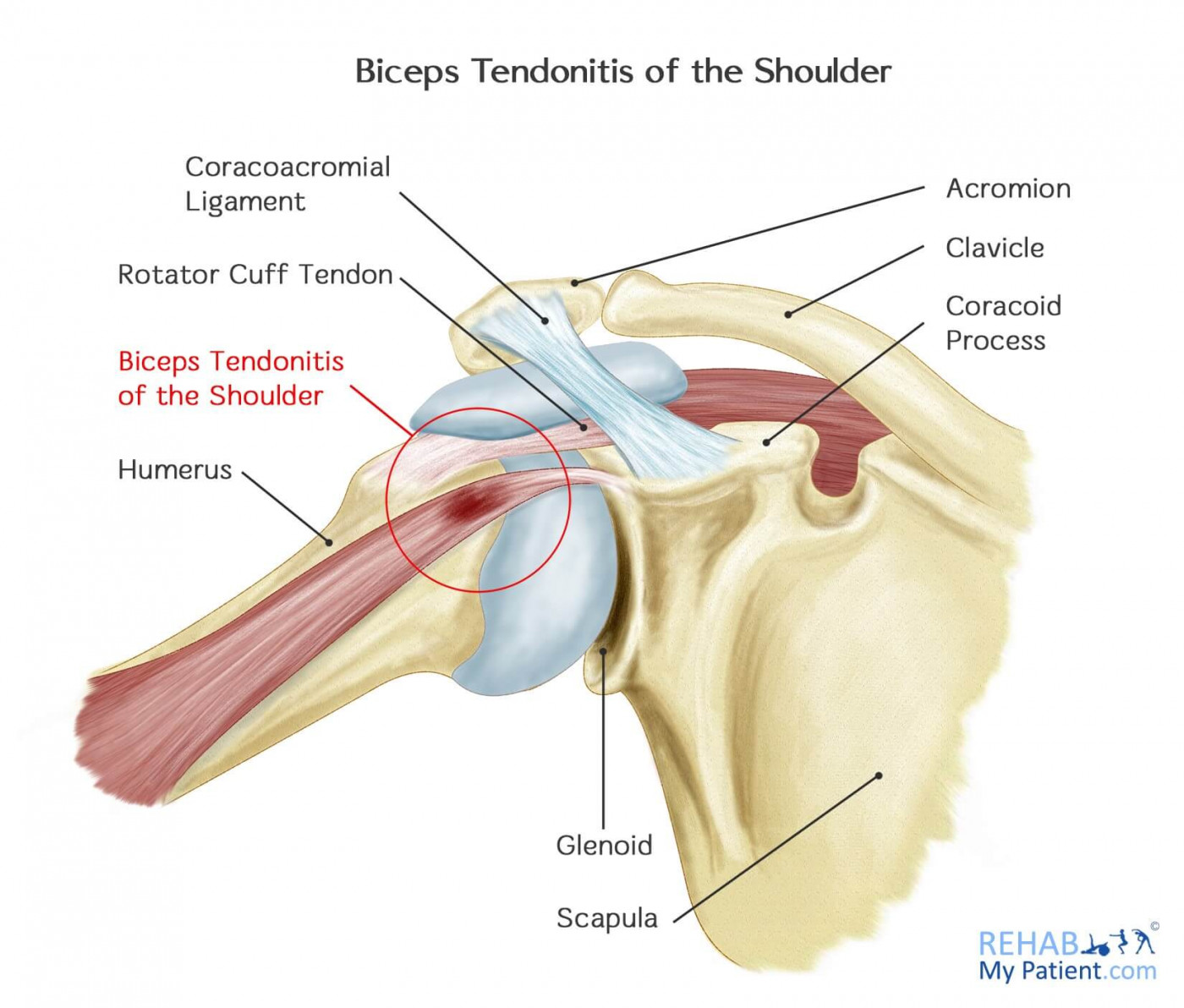
Biceps tendonitis is an irritation or inflammation of the upper bicep tendon. The strong cord-like structure is responsible for connecting the upper end of the bicep muscle to the bone within the shoulder. Weakness and pain in the front part of the shoulder are some of the common symptoms associated with biceps tendonitis. These issues can often be cured with medication and rest. In certain instances (e.g. when a tear occurs) surgery is required for repairing the tendon.
Biceps Tendonitis of the Shoulder Anatomy
The shoulder is a ball and socket joint. The socket is part of the shoulder blade, and the ball is the top of the upper arm. The joint articulates to form the shoulder joint. There are many muscles surrounding the shoulder which give the shoulder stability and strength.
The bicep muscle is found in the front of the upper arm. It aids in bending the elbow and rotating the arm, while stabilizing the shoulder. So to find the muscle simply bend your arm and look for the bulge of the muscle contraction. The bicep muscle is composed of two tendons that attach the muscle to the bones of the shoulder. The long head is attached to the top of the shoulder's socket, which is lined with soft cartilage helping the head of the upper arm to fit in the shoulder socket. The short head is attached to the shoulder blade's bump.
To feel the biceps tendon, place your thumb in the front of your shoulder, and move your thumb left and right and you will feel some cord /stringy tissue that is often tender when pushed firmly; this is the biceps tendon.

How to Treat Biceps Tendonitis of the Shoulder:
- Rest
The first step in being able to treat biceps tendonitis is to avoid the activity causing the problem. This condition is most often an overuse injury, so the cause is probably the activity or sport you do most frequently.
- Ice
Apply a cold pack for 5-10 minutes multiple times per day to minimize swelling. Avoid applying the ice directly on the skin.

- Anti-Inflammatory Medication
Ibuprofen and naproxen help to minimize swelling and alleviate pain and discomfort. Use only short term.
- Steroid Injections
Steroids (cortisone) tend to be quite effective in relieving swelling. Injecting steroids into the tendon will help to alleviate pain. Risks are rare, but the main risk is that tendon could rupture in the weeks following cortisone injection.
- Physical Therapy
Specific strengthening and stretching exercises will restore your with range of motion and strengthen the shoulder at the same time. Massage can help stretch the biceps, reducing tension in the muscle. Frictions to the tendon can help stimulate blood flow and encourage healing. Electrotherapy and acupuncture can also help reduce inflammation.
Tips:
- X-rays are not particularly helpful if you suspect biceps tendonitis. An MRI creates a better image of the soft tissue.
- Always avoid weight training, especially bicep curls with a dumbbell or barbell.
- Avoid overhead lifting. Lifting overhead causes more strain and pulling on a muscle that is already in pain. Only lift within a range that provides you with comfort and minimal pain.
- The most common symptom is pain in the front of your shoulder. Other symptoms can be a snapping sound or sensation within the shoulder joint. Clicking or clunking sounds in the shoulder are very common, so unusual noises need to be checked out by your therapist.
- Stretching and strengthening exercises to the biceps muscle can help with healing, and sport in future. So stick with your rehab program.
Sign Up
Sign up for your free trial now!
Get started with Rehab My Patient today and revolutionize your exercise prescription process for effective rehabilitation.
Start Your 14-Day Free Trial